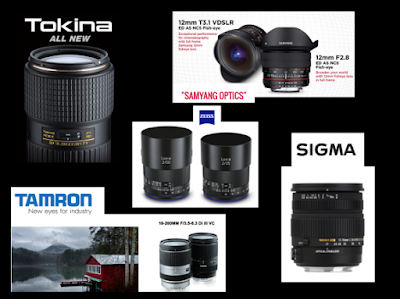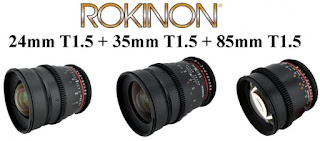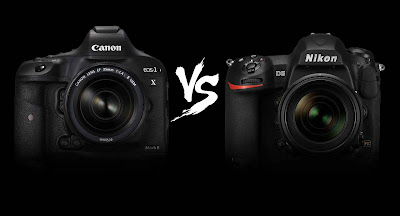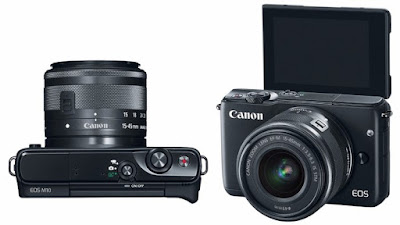
Tips on choosing a third-party lens for travel photos, portraits, landscape or weddings
Do
you want to upgrade your kit lens to make photographs as portraits, wedding
photos, landscape photos, family photos or to accompany you traveling? You can
choose lenses made by a third party, such as a standard zoom lens made by
Tamron or Sigma.
When
you buy a DSLR cameras, particularly Canon or Nikon, usually you get a kit lens
18 - 55mm. Perhaps you want to have a lens that you can use to create
portraits. Many people who advise you to choose a fixed lens. If you rarely
use, I suggest you select a zoom lens 17-50mm f / 2.8. You can choose Tamron
lens 17-50mm f/2.8 XR Di II LD Aspherical IF or Sigma 17-50mm F2.8 EX DC OS HSM.
Why
is that?
It
is true that a fixed lens such as 50mm version is very nice if you use to
create portraits, such as graduation photo, photographing newlyweds or a family
photo. You will get brilliant photos and sharp. Fixed lens made by Nikon or
Canon are usually expensive.
 |
| 17-50mm F2.8 EX DC (OS) HSM by Sigma. Image: youtube.com |
If you are a budding photographer, you should
choose the lens 17 - 50mm f2.8. This lens is suitable for making photographs in
various categories such as travel, landscape, wedding & events, family, and
of course the portrait. Tamron and Sigma could be the right choice, besides the
original lens from Canon or Nikon.
Tamron
lens 17-50mm f/2.8 XR Di II LD Aspherical IF manufactured is a sensible
option upgrade. Why does it make sense? At the moment you do not need a Tele
lens and still 'awkward' when you use a prime lens, then you need a standard
zoom lens with a large aperture. Besides Tamron, you can also choose a lens
17-50mm F2.8 EX DC (OS) HSM made by Sigma.
The
Tamron zoom lens bokeh with
a focal length 17-50mm f / 2.8 is ideal for everyday shooting, but the
resulting picture has a good quality and sharp, because this lens has a maximum
aperture f / 2.8. A lens with a large aperture with such, you would normally
find on a fixed lens. Standard zoom lens such as Tamron or Sigma production of
this new lens is very flexible for a variety of everyday use, good for
traveling, wedding photos or to make a portrait.
Meanwhile the Sigma 17-50mm F2.8 EX DC OS HSM is a perfect wide to standard
zoom lens designed for APS-C DSLRs. Equipped with a Hyper Sonic Motor (HSM) and
an Optical Stabilizer (OS), the 17-50mm boasts a large fixed 2.8 aperture
throughout the entire zoom range. Sigma also claimed that the OS allows for
easier handheld shooting while the HSM ensures quick, accurate and consistent. Accordint to sigmaphoto.com, this lens is
powered with FLD glass elements (with performance equal to fluorite) along with
two glass mold elements and one hybrid aspherical lens provide excellent
correction of aberrations and allow for incredibly sharp images with great
contrast.
Tamron lensa 17-50mm f/2.8 XR Di II LD Aspherical IF has many excellent
features that may not be owned by another lens manufacturer. Tamron seriousness
to build 17-50mm lens f / 2.8 of this, it is evident there are some versions
that are made compatible with various famous brands DSLR. In addition, there
are also Tamron 17-50mm f / 2.8 with a complete stabilizer VC, of course the
price is slightly more expensive than the version without stabilizer VC. Tamron
also claims that the lens can be relied upon to produce bokeh photos or photos
with a narrow depth of field. By setting the right focus, you can get a
portrait photo with the background blurred, but the model will always look
sharp, bright with natural skin tone.
You are free to choose one of the standard zoom lens, whether you will
choose a Sigma or Tamron, so you have a companion lens besides the kit lens,
which has been provided by Nikon or Canon. If you are curious you can compare
with similar lenses manufactured by Tokina, Samyang, even by Canon or Nikon,
although the specifications and features are somewhat different, and of course
at varying prices. If you want, you can also choose the latest version of the
standard lens zoom.




































